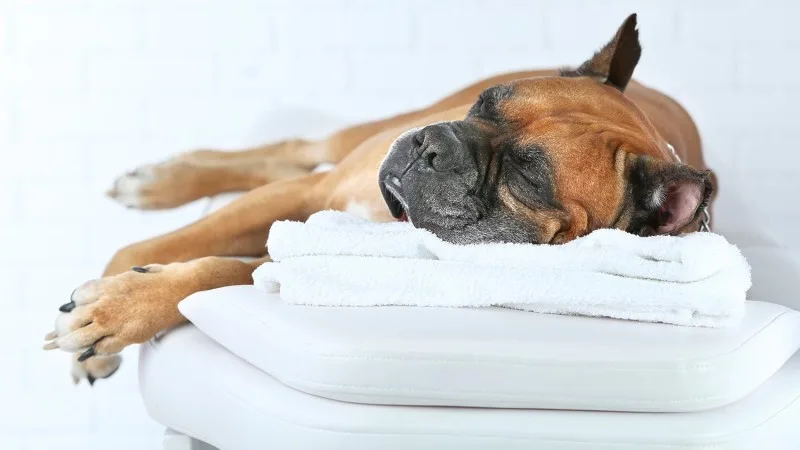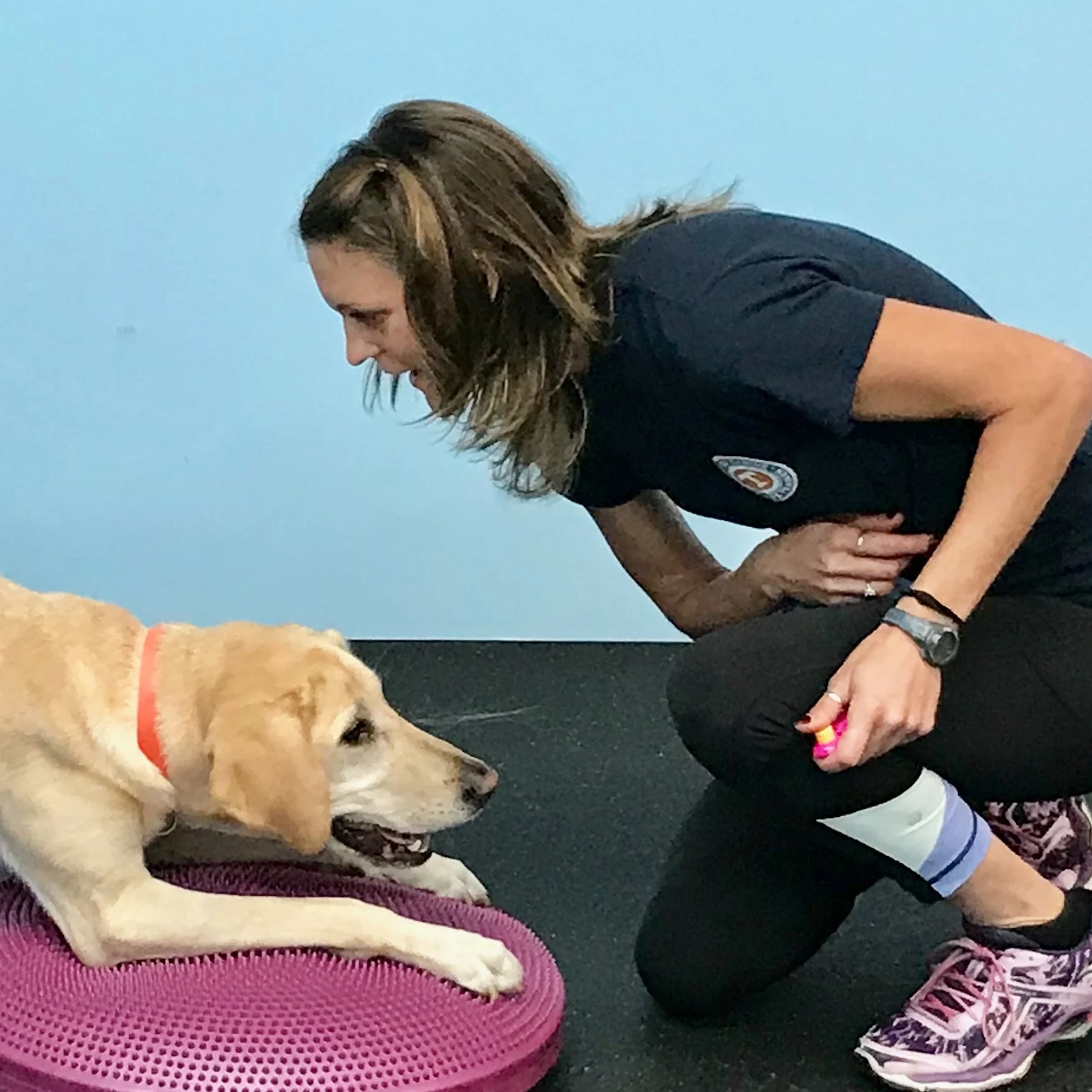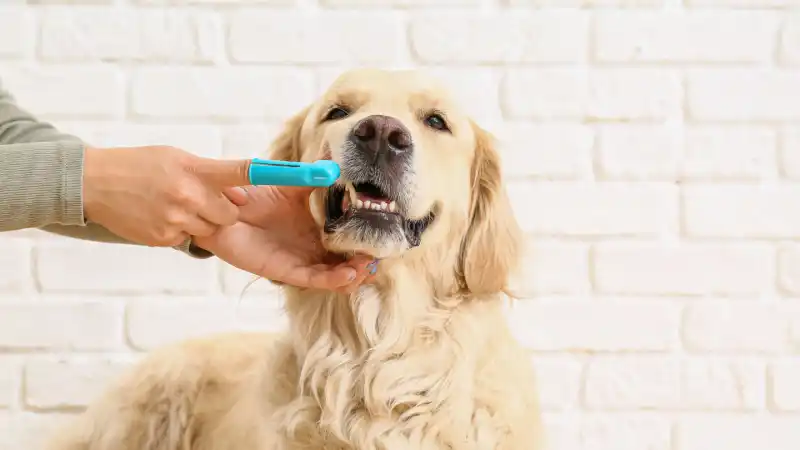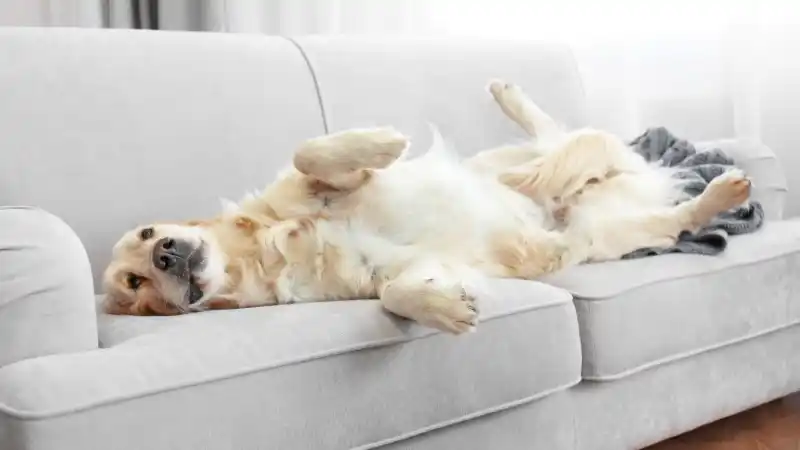The Power of Dog Massage Therapy
Dog massage can improve your dog's physical and mental health. Discover the benefits of canine massage therapy and give your pet a doggy spa day!

Massage therapy is a treatment powerful enough to make a senior dog suffering from debilitating arthritis walk again without a harness. This essential rehabilitation modality is integral to a dog’s recovery process, whether recovering from IVDD surgery or a leg injury.
Dogs love massage sessions with gentle pressure and circular motions on the side of the spine. A gentle massage is how massage therapists start a session with a dog recovering from an injury.
Let’s look at how doggy massage fits into the veterinary landscape.
Benefits of Dog Massage
Through direct work on a dog’s soft tissues, canine massage can improve blood flow, alleviate stress, reduce pain, relax tight and sore muscles, and help heal sprains and strains. In addition, many believe it also strengthens the immune system, improves digestion, and lowers blood pressure.
Many owners use massage with canine conditioning, chiropractic adjustments, and other holistic veterinary remedies like acupuncture. Various gentle and deep tissue massage techniques are known to even provide the following health benefits:
Reduce high blood pressure
Help with sore muscles from competition
Prevent senior dogs from injuring themselves
Promote calming and relaxing behavior
Canine Massage Therapists
Learn more from two providers in the Q&A below about canine massage therapy. Dee Close is a Certified Small Animal Massage Therapist (CSAMT) through Doggone U and owns K9 Massage Matters in Rhode Island. Richard Seltzer is a Small Animal Massage Practitioner (SAMP) through the Northwest School of Animal Massage (NSWAM) and owns Hands Helping Paws Canine Massage in Oregon. These providers are also avid canine sports competitors and Certified Canine Fitness Trainers (CCFTs).
Massage Therapy for Dogs
Q. What other benefits does canine massage provide?
Dee Close (DC): I feel that massage strengthens the bond between humans and animals. It also enhances mental alertness and improves the animal's overall well-being both physically and emotionally.
Richard Seltzer (RS): Massage also helps move fluids through the lymph system to remove “bad stuff.” Massage is used post-surgery to help the healing process and can be used in conjunction with rehab under veterinary guidance.
Q. Which massage techniques do you perform? How do you determine what massage techniques to use on a dog?
DC: I utilize numerous techniques, including Swedish, Deep Tissue, and Shiatsu methods. Swedish techniques, such as effleurage and petrissage, warm up the muscle and surrounding fascial tissues. I use skin rolling to release myofascial restrictions on the skin and superficial muscles. Deep tissue techniques, such as cross-fiber friction and trigger point treatment, are used to release and lessen deeper muscular adhesions and myofascial restrictions.
I use some methods, such as pin and stretch, to encourage elongation of shortened tight muscles. The methods and techniques I use are based on my evaluation of the dog’s gait, weight-bearing stance, passive range of motion of the joints, and what I feel with my hands.
RS: I use myofascial release and several different massage strokes. I don’t use one specific technique. I often work with trigger and stress points with my performance canine clients and slow, gentle, full-body massage for seniors.
Q. What are the most common reasons owners decide to get a massage for their dogs?
DC: The two main reasons I see clients are for competitive events and arthritis or old injuries plaguing their dogs. During competitions, such as agility, I help them warm up with a pre-competition massage and cool down post-competition. The most common conditions I come across in dog athletes are shoulder injuries and psoas injuries. For older or retired dogs with some medical issues, it is important to maintain their range of motion and prevent any further loss of mobility.
RS: Their dog is not performing the way they think they should at a performance event, their dog is a senior citizen and they want to help them feel better, and veterinary referral. I often work with a vet that comes to many of the same agility trials as I do. She does chiropractic adjustments and then sends them to me to get massaged to help the muscles leave the bones where she put them. I am also working with a local vet who does chiropractic and acupuncture. She wants to watch me do conditioning and massage with a common canine client doing IPO performance work – the owner is also a veterinarian.
Q. Who are your canine clients? Dog athletes, senior dogs, or dogs recovering from certain ailments?
DC: My clients are a mix of dog athletes, seniors, and some with past injuries that have been released from rehab.
RS: Canine athletes and senior dogs.
Q. What are some less common reasons and conditions that require dog massage therapy?
DC: A less common reason I come across is when owners want to see how their dog will deal with it. They want to try it out and see how their dog responds. Most people are impressed with how calm their dog is afterward, especially dogs that usually won’t settle down and are always on edge.
RS: Vet referral after laser and rehab treatments.
Q. How do you handle a dog who is restless or overly excited?
DC: I will apply acupressure to the points that calm and balance emotions. They are along the energy meridians that flow through the body and can be “blocked” or stuck. They need to be released by manually stimulating the points - like acupuncture without the needles. I also set the intention to calm and connect to the animal energetically through Reiki.
RS: I have the owner rub their ears and muzzle or, if the owner isn’t there, I allow the dog to be restless and follow them around the area. I tend to avoid using a table with dogs that I don’t know and are behaving restlessly. I won’t “force” them to finish a session.
Q. What drives the frequency of massages?
DC: Massage frequency is based on the dog’s condition, the owner’s financial state, and what the veterinarian recommends if they’re involved due to an injury. I suggest, at a minimum, a monthly maintenance massage to maintain overall well-being. If in competition, I recommend more frequent massages to help prevent injuries at the frequency the owner can afford. I recommend at least a pre-and post-competition massage for each event day.
RS: The frequency I recommend depends on the reason they are being massaged and the owners’ situation. With senior dogs, I like to massage them twice a month if they are otherwise in good shape. I work with their vet to determine the frequency for dogs that have been injured. Most massages I do are at agility trials, and there, if the dog is not injured, frequency is based on convenience.
Q. Dog massage is a specialized skill that requires training. What are some popular and credible massage certifications and education providers?
DC: Here are two certification programs that I recommend - Doggone U at Bancroft School of Massage Therapy and Tallgrass Animal Acupressure Institute.
RS: When I was researching where I wanted to train, I looked at one in Ohio and one on the East Coast that specialized in horses but also offered canine massage. Several programs I looked at only required online work and sending in videos of massaging canines. I chose NWSAM because, besides online bookwork, they required a 5-day in-person practical with dogs and owners I had never met. They required me to massage new clients with the instructor watching and asking questions.
Q. How can dog owners find a quality practitioner?
DC: Other CSAMT graduates are listed here, and I also recommend looking at the National Board Certification for Animal Acupressure and Massage website for board-certified practitioners. They are required to take 20 CEUs every two years to maintain this type of certification.
RS: SAMP graduates are also listed on a site. If there is no one near you, search Facebook or do a web search for canine massage. Ask your veterinarian, local daycare, boarding, or other canine professionals.
Q. What else would you like to tell owners about canine massage therapy?
DC: Massage is a wonderful modality to improve and maintain health and well-being for their dog and themselves. I wholeheartedly recommend a massage regimen for their dog’s health.
RS: Canine massage is an underutilized but very powerful modality for healing that can be used in conjunction with veterinarian care and rehab - just like with people! Massage is not only helpful for our canine athletes but also the weekend warriors and seniors.
Q. What are your favorite things about being a canine massage therapist?
DC: I love the connection I make with each dog I put my hands on. I learn something from each of them. Knowing I give them joy and help them to feel better is the gift they give me.
RS: Helping my canine friends feel better and perform better, and the response I get after a client’s first massage. Often, during the first massage, the dog can be apprehensive since they don’t know me - but to see them pull their owner to the massage bed the next time is priceless!
Massage therapy is a great tool to keep canines fit and many techniques prevent injury. Massage helps with anxiety and arthritis, stimulates circulation, increases blood supply to joints, and alleviates discomfort.
Pet Insurance May Cover Canine Massage
Now that you’re knowledgeable about canine massage, ensure that it is legal in your state – the International Association of Animal Massage & Bodywork provides a summary here.
If it is, check your dog’s insurance policy – AKC Pet Insurance (underwritten by Independence American Insurance Company) offers policies that can cover dog massage if it is prescribed by a veterinarian to treat a specific eligible condition.

Every Dog and Cat Deserves the Pet Insurance of Champions
Get prize-winning care for your pets.

Jasey Day holds the Certified Canine Fitness Trainer (CCFT) credential through the University of Tennessee. She is a member of the Bobbie Lyons K9FITteam - a team of compassionate canine fitness instructors who actively teach others and continually expand their own knowledge. Since 2004, Jasey has taught a variety of workshops and classes on the following: Puppy, Canine Good Citizen/Family Pet, Advanced Family Pet, Canine Fitness, Canine Swimming, Rally, and Agility. In addition, Jasey has earned over 60 titles in Dock Diving, Agility, Rally, CGC and Trick Dog. Jasey has worked full time for the American Kennel Club since 2007 and teaches at Care First Animal Hospital in Raleigh, NC. Jasey’s Labrador Retrievers spend their free time hiking, training, and snuggling with Jasey.
READ MORE ARTICLES

